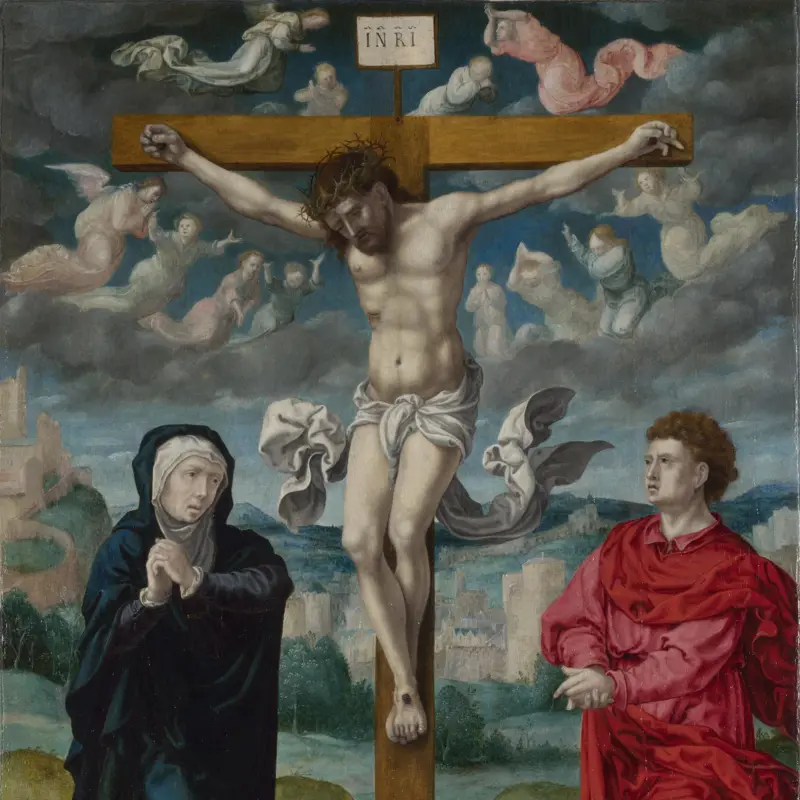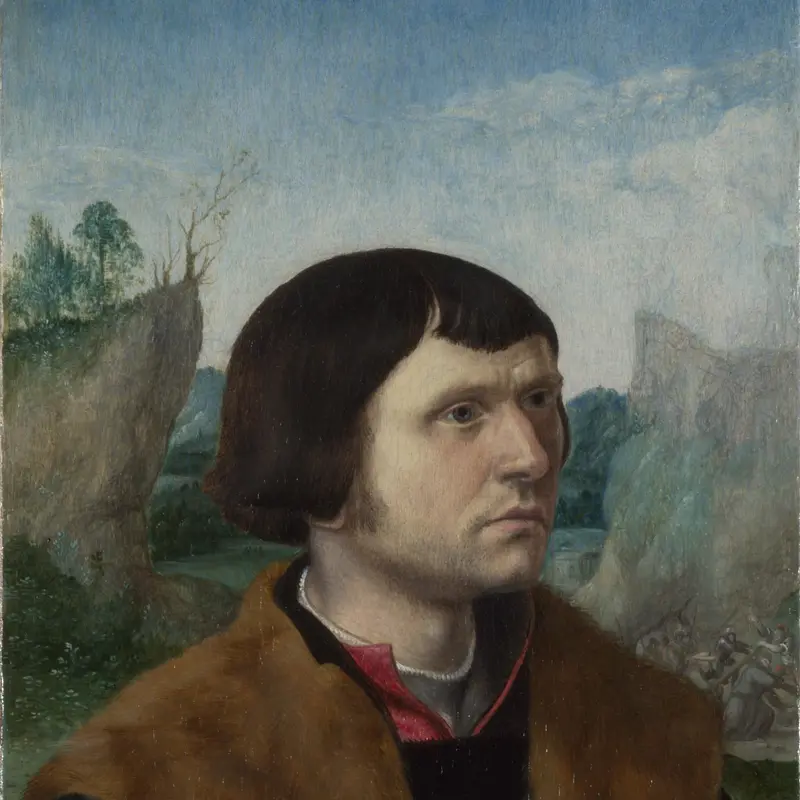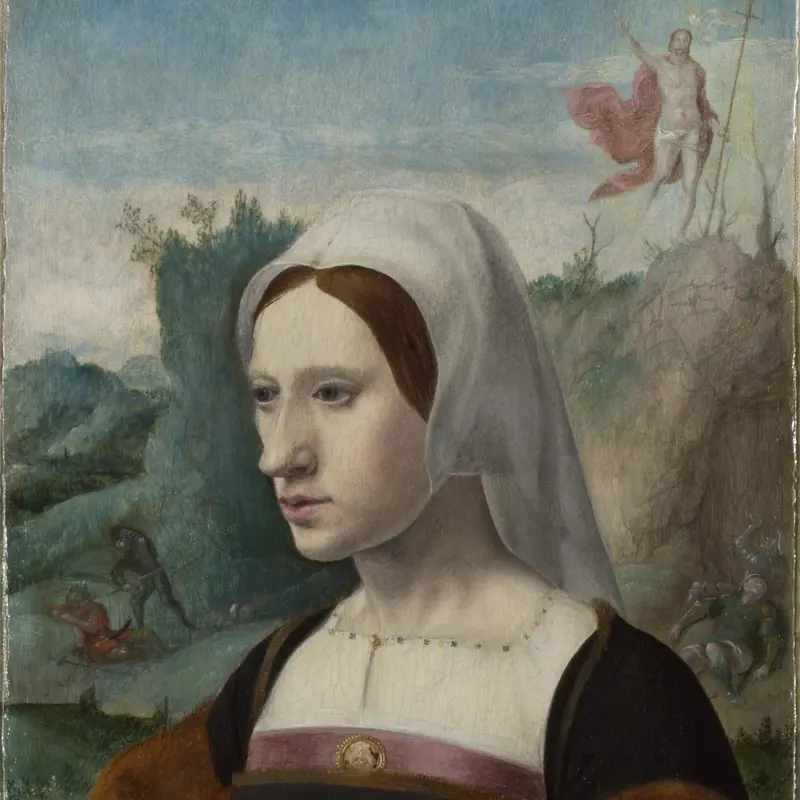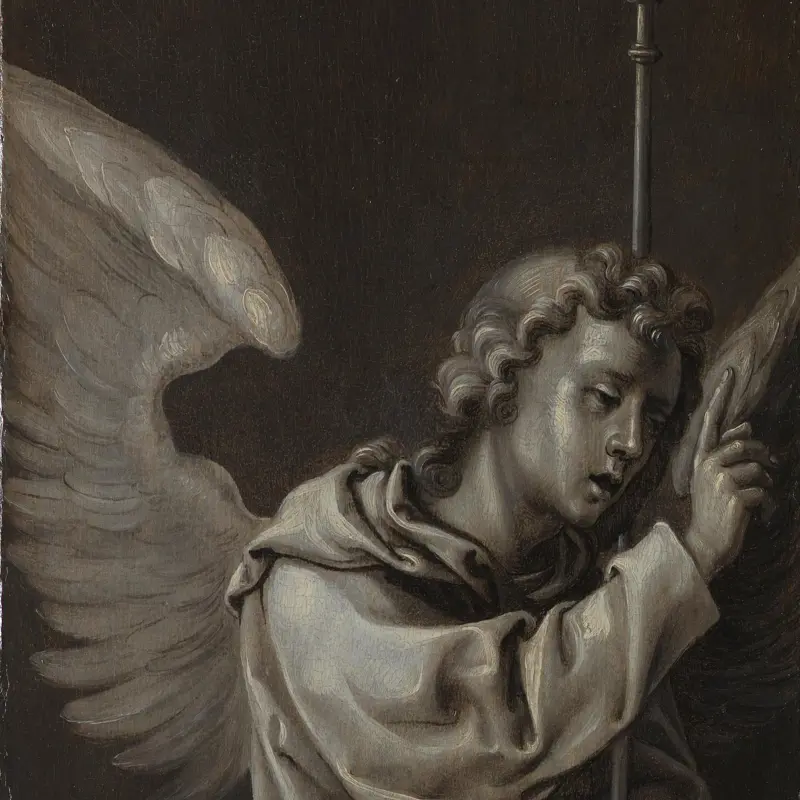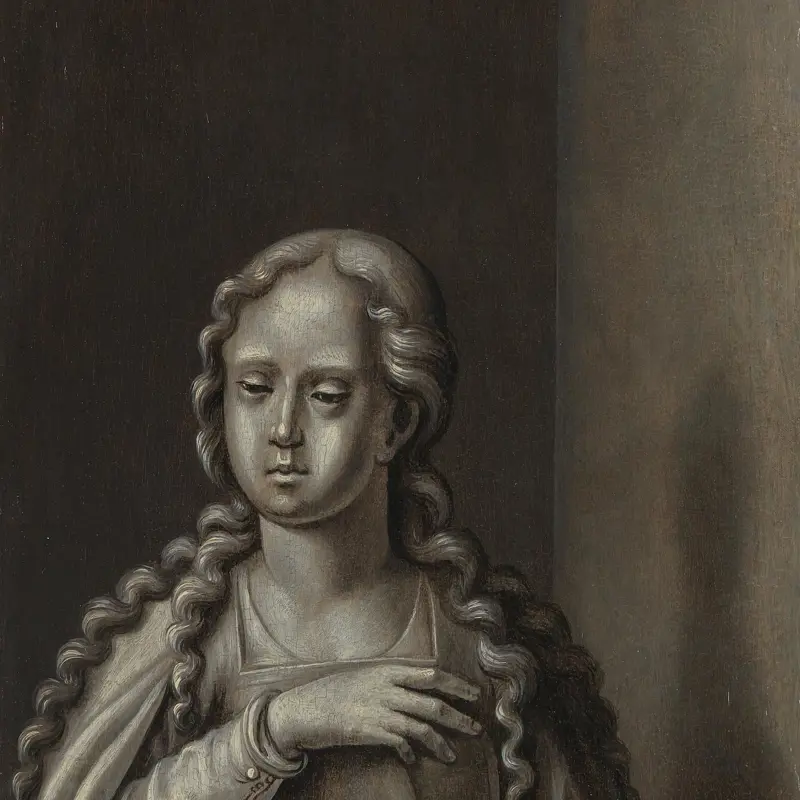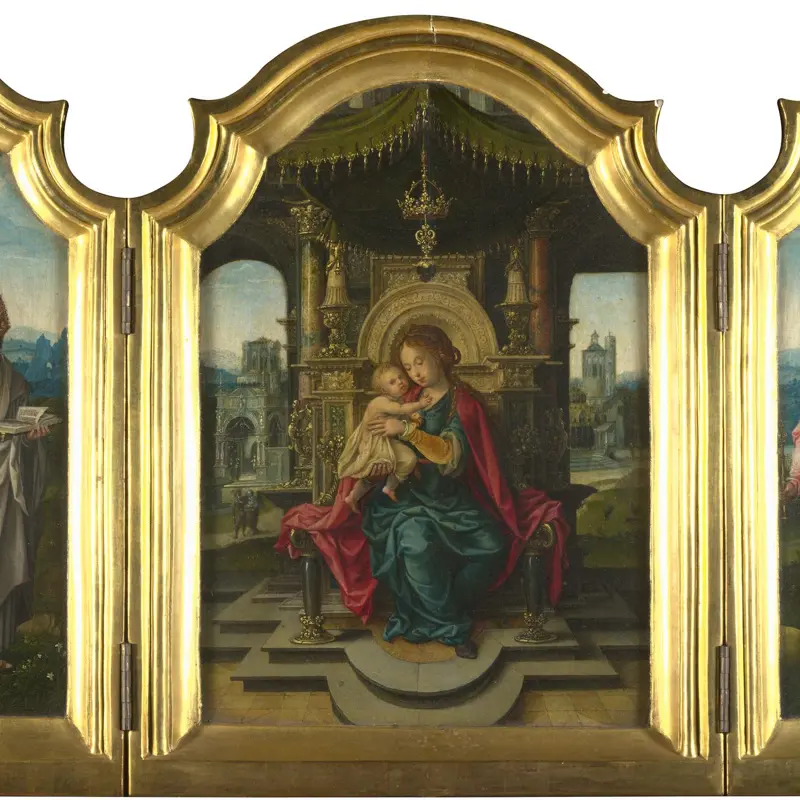Workshop of Pieter Coecke van Aalst, 'Donatrix: Right Hand Shutter', probably 1527-30
About the work
Overview
A woman kneels at prayer desk. We don't know who she is; she was once identified by a coat of arms – of which little now remains – on the side of her prayer desk. The painting is on the front of the right wing of a triptych (a painting in three parts). Her husband, possibly a member of the Bollis family of Sint-Truiden, faces her from the left wing.
In the landscape behind her, Christ rises into the sky. Below him, in a rocky landscape, are three of the soldiers who guarded his tomb: two recoil in terror, while the third sleeps. This is the Resurrection, a continuation of the narrative from the Crucifixion in the central panel.
The style of the triptych links it with the work of Bernaert van Orley and his pupil Pieter Coecke van Aalst – both also included secondary narratives in the backgrounds of their paintings – though its artist was much less gifted than them.
Key facts
Details
- Full title
- Donatrix: Right Hand Shutter
- Artist
- Workshop of Pieter Coecke van Aalst
- Artist dates
- 1502 - 1550
- Part of the series
- The Crucifixion Triptych
- Date made
- Probably 1527-30
- Medium and support
- Oil, originally on wood, transferred to canvas
- Dimensions
- 76.2 × 43.2 cm
- Acquisition credit
- Bequeathed by Mrs Joseph H. Green, 1880
- Inventory number
- NG1088.3
- Location
- Not on display
- Collection
- Main Collection
- Previous owners
Provenance
Additional information
Text extracted from the ‘Provenance’ section of the catalogue entry in Lorne Campbell, ‘National Gallery Catalogues: The Sixteenth Century Netherlandish Paintings: With French Paintings before 1600’, London 2014; for further information, see the full catalogue entry.
Bibliography
-
1945Davies, Martin, National Gallery Catalogues: Early Netherlandish School, London 1945
-
1955Davies, Martin, National Gallery Catalogues: Early Netherlandish School, 2nd edn (revised), London 1955
-
1987Davies, Martin, National Gallery Catalogues: The Early Netherlandish School, 3rd edn, London 1987
-
2001
C. Baker and T. Henry, The National Gallery: Complete Illustrated Catalogue, London 2001
-
2014
L. Campbell, National Gallery Catalogues: The Sixteenth Century Netherlandish Paintings: With French Paintings before 1600, 2 vols, London 2014
About this record
If you know more about this work or have spotted an error, please contact us. Please note that exhibition histories are listed from 2009 onwards. Bibliographies may not be complete; more comprehensive information is available in the National Gallery Library.
Images
About the series: The Crucifixion Triptych

Overview
Two donors – husband and wife – kneel in the wings of this triptych (a painting in three parts) and gaze at the Crucifixion in the central panel. The Annunciation – the moment the Virgin Mary was told she would bear a child – was originally painted in shades of grey on the outside of the wings, but the fronts and backs are now physically separate.
The style of the painting associates it with the work of Bernaert van Orley and especially his pupil, Pieter Coecke van Aalst. Coecke seems to have run a large workshop and several artists of limited ability seem to have been involved in this painting. This image of the Crucifixion was evidently a popular composition: several versions of it survive.

